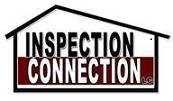Know your home's quality
Third-party inspector tracks key process items
Friday, May 10, 2013 Las Cruces Bulletin Homes & Southwest Living
In my work life before home energy rating and home inspection, I was responsible for quality assurance (QA) in a food process facility.
A key lesson we learn in QA is that we can only control what we can measure. If safe, enjoyable products with a long shelf life are to be produced, the manufacturer must have a detailed list of key process items (KPIs) that are closely monitored for deviation from acceptable quality limits.
Homebuilding is remarkably similar to food production in this respect. The best builders use detailed procedures and best practices along with checklists to measure actual installation versus rigid quality standards. You can see the results in the improved finish detail and increasing number of amenities and features at affordable price points in new homes all over town. Visible and measurable home components improve at a rapid pace.
There are components of new homes that are important, but not visible, and are more difficult to measure for builders and homebuyers. Builders and code officials do a good job of measuring and ensuring structural soundness, electrical safety and wastewater handling – true life and safety issues. Other KPIs sometimes go unmeasured and therefore do not improve at the same rate as more visible features. Insulation, ductwork and window or door membrane flashing are all hidden by the time most homebuyers (and many general contractors) do the final pre-purchase walk through. Although not considered components that cause safety problems, defects in installation of insulation, ductwork and flashing will cost homeowners utility dollars and comfort over all the years they own a home.
While conducting a walk-through insulation inspection for our local high-performance home program recently, we ran into the insulation crew as they finished installation of Fiberglas batts in a high-end custom home. The crew had not been informed that the home would be inspected by a home energy rater. Good insulation installation is fairly simple: Whatever the insulation material, it should fill each framed wall cavity.
I pointed out defects to the crew in the framed walls where the insulation did not fill the frame cavity and did not even contact the exterior wall surface. The ceiling insulation was not complete in some areas either.
The crew grumbled as they turned away to make the corrections, “I don’t know why they are bugging us on this – it ain’t an Energy Star house or nothin’!”
I thought that comment was very interesting. This was a knowledgeable crew that knows how to do good quality insulation installation. Since they did not anticipate a measure or inspection of their work, they completed a less than first quality job of installation. I bet this homebuyer believed she would get only the best installation work in her $300,000 home.
I have had the same experience with duct installation and duct leakage testing. When technicians know they will be tested, work quality improves. Most completed homes I test that didn’t have a third-party check for duct leakage during construction have air losses to the outside from the ductwork of the home, adding up to one-third to one-half of the heating and air conditioning system’s total capacity.
That adds up in utility costs when you run an air conditioner for 12 or 15 years.
Most builders begin to install drywall before the insulation is even complete. Drywall hides many sins in the ceilings and walls of our homes. It kind of makes sense to have a procedure in place to make sure those typical problems are inspected, measured and resolved in a new home.
Fortunately, homebuyers and builders have tools and best practices available to know these inspections did take place. Efficiency and green building programs such as El Paso Electric’s High Performance Homes, EPA-Energy Star, Build Green New Mexico and the U.S. Green Build Council’s LEED for Homes each mandates that an independent third-party inspect and measure specific KPIs when they are visible during construction and again when the home is complete to make sure no important comfort and efficiency components are damaged or missed during the many stages of construction.
The bottom line is, if your home builder does not participate in one of the third-party certification programs described above, KPIs may be lacking in your home. Your comfort and energy costs will tell the tale soon enough.
Miles Dyson is the owner of Inspection Connection LC - Professional Home Energy Rating and Home Inspection Services. For more information visit: https://www.InspectionConnectionTexas.com.
